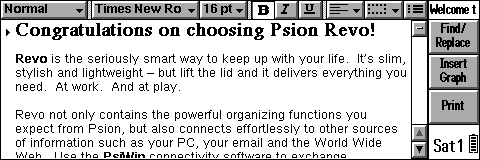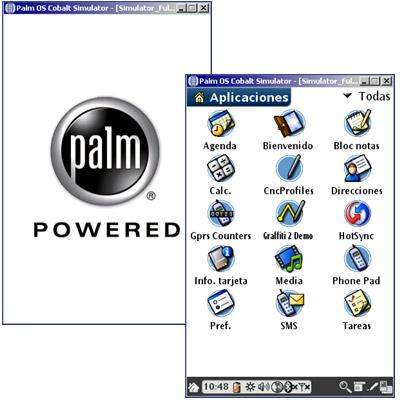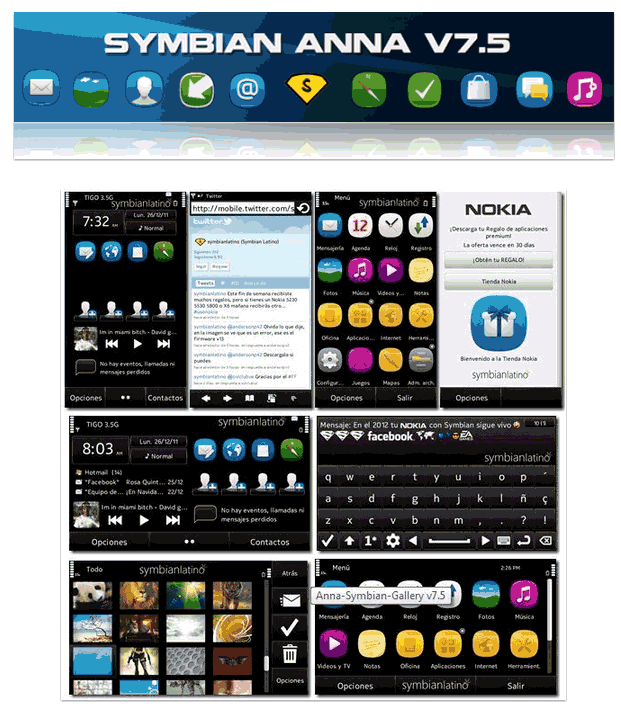Introduction to Application to Software Developer
In old age, if you have to send your message to anyone, you must send a messenger who travels across a long distance to deliver your message. From there on, there is a lot of advancement in the communication sector for sending your messages to call someone in a faraway place. Earlier, you used to send letters to your loved ones and have to wait for their reply. Then afterward came telephones. If you want to speak to someone, you have to call and talk to them. But there are also some disadvantages. Later, there came a breakthrough in the communication sector like Mobile phones. Since then, many advancements and developments have taken place in the mobile phone sector.
Now you enjoy many things besides talking or sending messages using mobile applications and software developers available on your mobile phone. Everyone is so busy with their mobile phones that they hardly get time to talk to people around them. Everyone is so busy in the virtual world that they don’t have time for the real world. So, what keeps you all so busy? There is an applications software developer available for mobile called mobile applications software developer, which is either pre-installed or you have to download any specific app as per your requirement. The word app, the short application, became so famous in 2010. It was also declared “Word of the Year” by the “American Dialect Society”.
What do you mean by Mobile application software developers?
So, let’s understand what you mean by Mobile application software developers as follows:
A mobile applications software developer is a software program commonly popular as a mobile app. Developers have designed and developed several mobile apps to run on any mobile device, PDA, Smartphone, tablet, or music player. Many applications and software developers come pre-installed on your mobile phone. If you want, you can uninstall it or download it from the distributor stores like play store, Windows Store, or iOS App Store. Undoubtedly the word app has taken the world into a small device, giving you some entertainment or information when you need them.
Now, let’s see where it all started, and the path of mobile phones and mobile applications software developers have traveled to come to this stage.
History
It all started on 3rd April 1973. Martin Cooper created the first mobile call used to work at Motorola to Dr. Joel S. Angel, who works in Bell laboratories. The first mobile phone used to place weighed 1.1 kg; the dimension was 23cm x 13cm x 4.45cm.
Some facts that you should know about early mobile phones
- You can call only 30 minutes daily as the battery life is terrible. Also, you have to charge the mobile phone for around 10 hours for full functionality.
- You can call a few people only in your area because of the poor quality of coverage.
Since the first mobile phones were developed and their limitations, it took decades of trial and error to get better mobile phones and the first mobile app. All the credit goes to IBM Simon, who gave the first mobile app. Actually, the first mobile applications software developer was a few Java arcade games. This includes a calculator and monthly calendar, and all were under the mobile app category. In 1993. IBM released the first smartphone for public use. It had features like a calculator, world clock, contact book, and calendar under the mobile app category. One of the famous apps was a snake game under the games category, introduced in Nokia 6110. After that, people started to demand more and more apps to use mobile phones for different purposes.
So the manufacturers created an internal team to develop codes for a mobile app for the brand. Now, the developers who were not a part of the internal team didn’t have the chance to create any apps. The manufacturers didn’t allow anyone other than a close team to work on it because it was an evolving market. No one wanted to lose customers to others, as the competition was cutthroat. Everyone wanted to make a mark in the market. But, later, they realized that the customers needed something really interesting apps that could make their life easy. Soon manufacturers started to take help from third parties to create apps for their brands and operating system to stay in the market. After the apps were developed, the main concern was making them available.
Earlier, we used phones to connect to the internet using a Dial-up connection. But the connection speed was also not good. Now mobile users need a plan where they can use the app anywhere, and they also need an internet connection. In the early ’90s, websites were full of color images, text, and other files. They relied mostly on Flash and JavaScript to enhance user experience often created using 90s website builders that were designed to simplify the process for users.. The earlier phones’ processing speed was slow and was unable to handle the intensive operation required by traditional web browsers. But at the same time, bandwidths were also very costly for users.
After many talks and discussions, people developed something called WAP (Wireless Application Protocol) to address the rising situations for mobile. The benefit of WAP is that it is a stripped form of HTTP designed to run on mobile phone bandwidth, processing speed, and RAM. The benefit for the manufacturers is that they could write one WAP browser and ship it with the mobile handset. And have faith that those developers will develop the content which users want.
However, the only disadvantage is that developers and content providers didn’t deliver as they thought. The batteries and memory were getting cheap, and there was an increase in demand for more features. WAP was unable to deliver properly as it was slow and failed. Then manufacturers thought of embedded technology to combine desktop operating systems with mobile technology. They build apps that can provide better user experience and satisfaction. Hence manufacturers started to develop different platforms (operating systems) for their devices, each having its own benefits. Let’s see about different operating systems available for mobile applications software developers where development has occurred.
Mobile Operating Systems to Build Applications Software Developer
The following are the OS to build application software developers.
Psion EPOC
EPOC is an operating system developed by Psion for their portable devices, PDAs. In the early 1990’s it released its first recognizable application for its 16-bit operating system machines called SIBO, which ran programs like a word processor, spreadsheet, database, and dairy. Later 32-bit operating system machines that came with 2MB RAM gave users the extra benefit of adding applications and system software as per their needs using software packs.
Palm OS
In 1996, Palm Inc. developed an operating system for their portable device called Palm OS, famously known as the Garnet operating system. This came with a touchscreen Graphical User Interface (GUI) and many applications and system software based on C/C++ programs. From v3.0, they included the WAP browser.
J2ME/JME
Sun Microsystems developed this famous operating system and named Java Micro Edition. Java was the best platform developed earlier, with several standards for phones, PDAs, and other embedded devices. First-time devices started implementing profiles like (Mobile Information Device Profile) which are subsets of configurations like Connected Limited Device Configuration (CLDC). They are also designed for devices with a memory of 160KB to 512KB, containing the necessary Java Class libraries to operate virtual machines.
Symbian
Symbian is one of the famous operating systems that ruled until the advancement of Smartphones and Android OS. People mainly thought that Nokia had developed it. However, this was developed by Symbian Ltd, which was a joint venture of Nokia, Ericson, Psion, and Motorola. All thought it was from Nokia because Nokia helped develop a Symbian operating system in all Nokia handsets and a few LG and Samsung.
After so many platforms became available in the market, their platform warfare started. The manufacturers became compelled to sell mobile phones with all the platforms to maintain their customer base. Earlier, WAP developed a language called Wireless Markup Language (WML) based on Extended Markup Language (XML) for all mobile devices using WAP. It was lightweight and best for the mobile in the 90s as their bandwidth was low and stripped out of Hypertext Markup Language (HTML) that needed less processing speed. So, earlier, many manufacturers were actually using WML for their development and made their application run. The next major achievement in the smartphone field was achieved by Blackberry in 2002. Blackberry Limited, formerly Research In Motion Limited (RIM), integrated the smartphone with the innovative concept of wireless email.
Now a day, the operating system ruling the market share is Android, Apple iOS, and Windows. The technological advancement has gone so far that organizations now have a special mobile software development and testing team. The main purpose of mobile applications is that people can read the news, check weather conditions, and play games. Afterward, the demands of people increased, and to give them something interesting that they could use for other purposes.
Manufacturers started developing different applications and system software. Since then, many applications and system software have been available to users to complete their work by sitting in one place. For example, the most famous apps now-a-days are Food Panda and Faasos, where we can order food and get home delivery service without going to a restaurant. You can order apparel online and have many options to select from.
Almost all the big outlets have their online apps available where you can browse different styles, saving a lot of time. You don’t have to keep hopping from one shop to another. Now, these apps are almost popular among everyone who enjoys online shopping. Apps like Flipkart, Jabong, Myntra, and Amazon are among the famous apps to browse for many different sections available and make any purchases. Earlier, if we had to recharge our mobile phone, we used to go to a nearby shop to recharge it.
However, now you can use the apps from Paytm, and Freecharge, where you can log in and recharge at any point and get some cash back or benefits. Who thought we could order medicines using an app? It also became a reality. So you name anything you want to do, and an app is available for it.S o when you purchase a mobile with an OS like Android, Apple iOS, Windows, or Blackberry, you have to go to their respective App store and download all the required apps for your purpose. You need to know what types of data an app can access.
It accesses
- Call Logs.
- Internet Data.
- Phone and email contacts
- Device’s unique ID and location.
- Information on how to use the app.
Now, there are chances that in this digital world, your phone might get malware when downloading an app. So always keep an antivirus installed on your phone and scan the phone after every app download to protect your phone data. In the end, I would like to conclude that you are using smartphones. So many apps are available to you, so use them appropriately. You should keep your smartphones free from any kind of malware. You should also protect your data on your mobile phones as they are important to you.
Recommended Articles
This article has been a guide to the mobile applications software developer, commonly popular as a mobile app, a software program designed and developed to run on any mobile device, PDA, or Smartphone. You can also go through our other suggested articles to learn more –







